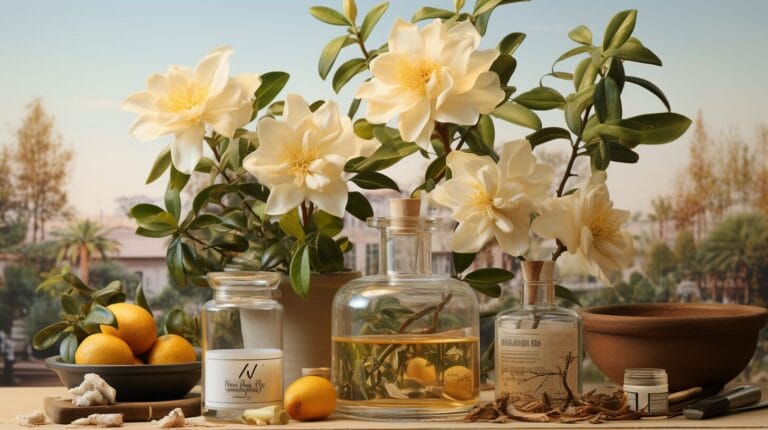Looking for a houseplant that thrives on neglect? Meet Zamioculcas zamiifolia, commonly known as the ZZ plant scientific name, a remarkable species that’s revolutionizing indoor gardening. With its glossy, dark green leaves and nearly indestructible nature, this tropical beauty has earned its reputation as the ultimate low-maintenance companion for both novice and experienced plant enthusiasts.
What makes this plant truly special is its incredible ability to survive in conditions that would spell doom for most other houseplants. Whether you’re dealing with low light, irregular watering, or fluctuating temperatures, the ZZ plant takes it all in stride. In this comprehensive guide, we’ll explore everything from basic care requirements to expert propagation techniques, helping you unlock the full potential of this extraordinary plant. Get ready to discover why the ZZ plant has become a favorite among plant lovers worldwide.
The ZZ Plant: An Overview of Zamioculcas Zamiifolia
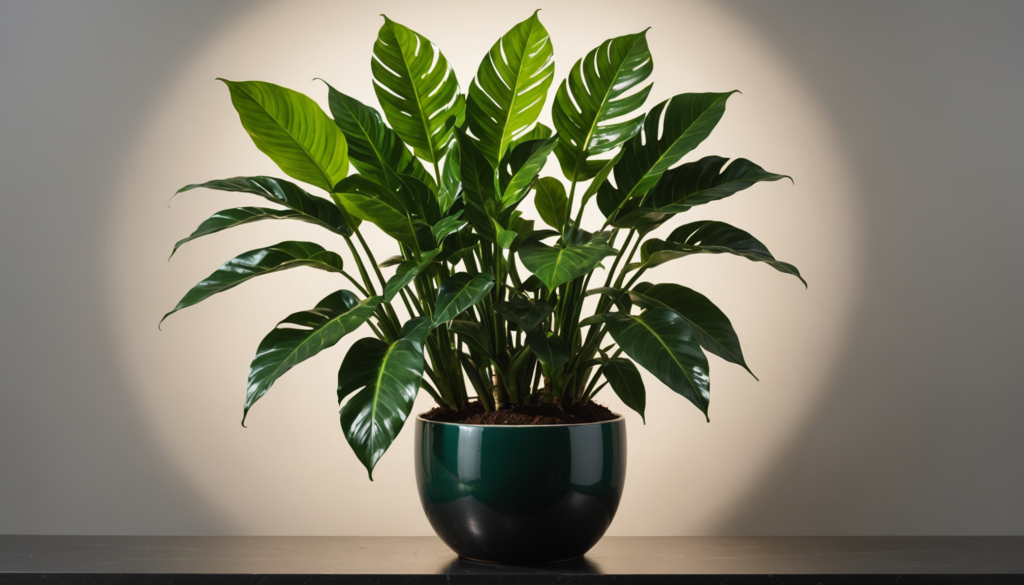
Zamioculcas zamiifolia is prized for its glossy, dark-green foliage and ability to handle neglect. It grows naturally in Eastern Africa, including Kenya, Tanzania, and Zanzibar. This tropical perennial stores water in thick rhizomes underground, which helps it endure long stretches without frequent watering. Many gardeners find it easy to grow indoors thanks to its tolerance for low-light conditions and irregular care. (Wikipedia, NCSU Extension)
What is the ZZ Plant?
The Zamioculcas zamiifolia highlights its unique resilience and dedication to thriving in challenging environments, making it a popular choice among plant lovers.
The ZZ plant’s arching stems hold pairs of waxy leaflets that stay upright and lush. It can reach about two feet tall, though it often grows slowly. Its underground rhizome expands over time, storing water for use during dry periods. This resilience allows the plant to thrive even with minimal attention.
Characteristics of Zamioculcas Zamiifolia
• Leaves: Thick, waxy leaflets arranged in pairs along each upright stem
• Height: Commonly grows to around 2–3 feet indoors
• Rhizome: Water-storing structure that supports the plant during drought
• Growth: Steady but slow, with new shoots sprouting when conditions improve
| Feature | ZZ Plant | Average Houseplant |
|---|---|---|
| Light Needs | Tolerates low light | Prefers moderate to bright |
| Water Requirements | Low (thanks to rhizome) | Regular watering recommended |
| Growth Rate | Slow | Moderate to fast |
| Maintenance | Minimal | Frequent care required |
Origins and Natural Habitat of the ZZ Plant
In the wild, Z. zamiifolia adapts to dry forests with limited rainfall. It copes with drought conditions by storing moisture in its rhizome. These forests provide shifting light levels under a canopy, and the plant endures both low and indirect light. Organic-rich, well-draining soil supports its slow, steady growth in Eastern Africa.
Scientific Classification and Botanical Details
Z. zamiifolia belongs to the Araceae (arum) family. It is the only species in the genus Zamioculcas, first described in 1829. This herbaceous perennial exhibits CAM photosynthesis, a water-saving process that boosts its drought tolerance. Its ability to thrive with minimal watering makes it a favorite for garden design and indoor spaces.
Essential ZZ Plant Care Tips

Zamioculcas zamiifolia, commonly called the ZZ plant, is an easy-to-grow houseplant prized for its glossy, dark green foliage. It adapts well to a range of indoor environments and requires minimal attention to thrive.
Light and Water Requirements for ZZ Plants
ZZ plants grow in low-light conditions but prefer moderate, indirect light to support steady new growth. Avoid direct sunlight, which may scorch the leaves and cause yellow tips. Infrequent watering remains key when caring for a ZZ plant; the top inch of soil should feel completely dry before the next drink. Overwatering often leads to root rot, so improved drainage and proper pot size help safeguard this drought-tolerant species.
Water only when the plant’s rhizome, a thick underground stem storing water, cannot draw enough moisture from the potting mix. This method prevents mushy roots and browning leaves. During winter, reduce the watering schedule since the plant may grow more slowly. Consistent underwatering is usually safer than frequent watering that keeps the soil saturated.
Soil and Potting Needs for a Healthy ZZ Plant
A well-draining potting mix is essential. Many growers use a balanced blend of potting soil, coarse sand, and perlite for adequate aeration. The following table shows a simple soil mix ratio:
| Component | Purpose | Ratio |
|---|---|---|
| Potting Soil | Base Medium | 60% |
| Perlite | Drainage | 20% |
| Coarse Sand | Aeration | 20% |
The ideal pH sits between 6.0 and 7.0, and containers must have drainage holes. Oversized pots often retain excess moisture, leading to mushy stems or yellow leaves.
Temperature and Humidity Considerations
Average household temperatures of 65-75°F (18-24°C) help ZZ plants grow slowly but steadily. They survive brief drops near 45°F (7°C) without lasting harm but may show leaf browning if exposed for an extended period. These tropical plants do not need special humidity levels and adapt well to average home humidity. Low humidity rarely causes problems, although maintaining 40-50% ambient humidity supports healthy leaflets.
Fertilization Schedule and Requirements
ZZ plants typically need light fertilization during the growing season. A balanced, water-soluble fertilizer diluted to half strength once each month from spring through summer is sufficient. This schedule prevents excessive stem or leaf growth that can weaken the plant. Fertilizing during fall and winter may cause disproportionate growth, so it is best to pause until active growth resumes in warmer months.
Slow, steady development and firm, upright stalks are usually a sign of proper care. Browning leaves often indicate overwatering or fertilizer buildup, while yellow foliage may suggest prolonged drought or harsh direct sunlight. Regular monitoring of soil moisture and balanced fertilizer use will keep Zamioculcas zamiifolia healthy and lush indoors.
How to Propagate the ZZ Plant

I find that the ZZ plant (Zamioculcas zamiifolia) is easy to grow and often prizes gardeners with its glossy foliage and hardy nature. This plant stores water in thick rhizomes, so it tolerates neglect and low-light conditions. Propagation involves a slow but steady process that produces new growth when the plant’s basic needs are met.
ZZ Plant Propagation Techniques—Leaf Cuttings and Division
Division involves splitting large rhizomes into separate sections. The success rate stands at 80-90% over two to three months. Leaf cuttings succeed about 60-70% of the time, though they can take four to eight months to form roots. Stem cuttings show a 70-80% success rate within three to six months.
Step-by-Step Guide to Propagating Zamioculcas Zamiifolia
Division Method:
- Lift the plant from its pot.
- Separate the rhizome sections.
- Place each part in well-draining potting mix.
- Keep soil at 65-75°F (18-24°C).
- Avoid direct sunlight and maintain moderate humidity.
Leaf Cutting Method:
- Remove one leaf at its base.
- Let the cut callus for 24 hours.
- Plant it in moist, balanced soil with a pH of 6.0-7.0.
- Maintain 60-80% humidity.
- Water gently to prevent root rot.
| Propagation Factor | Division | Leaf Cuttings | Stem Cuttings |
|---|---|---|---|
| Success Rate | 80-90% | 60-70% | 70-80% |
| Time to Growth | 2-3 months | 4-8 months | 3-6 months |
| Difficulty Level | Easy | Moderate | Moderate |
| Best Season | Spring/Summer | Spring | Spring/Summer |
Troubleshooting Common Issues in ZZ Plant Propagation
I notice slow rooting if temperatures drop below 60°F (15°C). Rot becomes a problem when growers overwater or fail to improve drainage. Yellow leaves can appear from excessive moisture in the soil. In most cases, cutting back on frequent watering and providing indirect light helps the plant thrive.
Timeline and Success Rates
Rhizome roots often emerge in two to three weeks. Visible stalk growth may take three to four months, and a mature plant can need up to two or three years. Consistent warmth, low-light tolerance, and proper care guidelines boost success for this araceae family favorite.
Identifying and Managing ZZ Plant Pests

Zamioculcas zamiifolia, also called the ZZ Plant, is prized for its glossy foliage and easy-to-grow nature. I appreciate that it thrives in low-light conditions and tolerates occasional neglect. Still, a ZZ Plant may face pest problems if exposed to overwatering or poor growing conditions.
Common Pests Affecting Zamioculcas Zamiifolia
Common insects that may be observed include mealybugs, spider mites, scale, and fungus gnats. Mealybugs are characterized by small, cotton-like clusters, often found around leaf joints. Spider mites may produce fine webbing on stems and new growth. Scale insects present as brown bumps on leaves or stalks. Fungus gnats are typically observed hovering near moist soil.
| Pest Type | Visual Signs | Location | Main Cause |
|---|---|---|---|
| Mealybugs | Cottony flakes | Leaf joints, stems | Overwatering |
| Spider Mites | Fine webs | Underside of leaves | Low humidity |
| Scale | Brown bumps | Leaves, stalks | Plant stress |
| Fungus Gnats | Tiny black flies | Soil surface | Consistently wet soil |
Natural Remedies for Treating ZZ Plant Infestations
I rely on neem oil sprays, insecticidal soap, and alcohol swabs to eliminate pests. Weekly inspections help me spot early outbreaks before they spread. If I see minor infestations, I rinse the entire plant with room-temperature water. This gentle approach keeps the foliage lush.
Preventative Measures to Keep My ZZ Plant Healthy
I allow the top inch of soil to dry before watering, which prevents root rot and discourages fungus gnats. A light wipe of each leaflet removes dust and deters cottony bugs. Good air circulation and quarantining new indoor plants reduce the chance of infestations.
When to Seek Professional Help
I contact a specialist if pests affect more than half the plant or if repeated treatments fail. Severe cases can involve secondary infections, especially in low humidity or extended periods of poor care. Expert guidance may save the rhizome and stem structure when the plant shows significant decline.
The ZZ Plant in Your Garden: A Perfect Houseplant
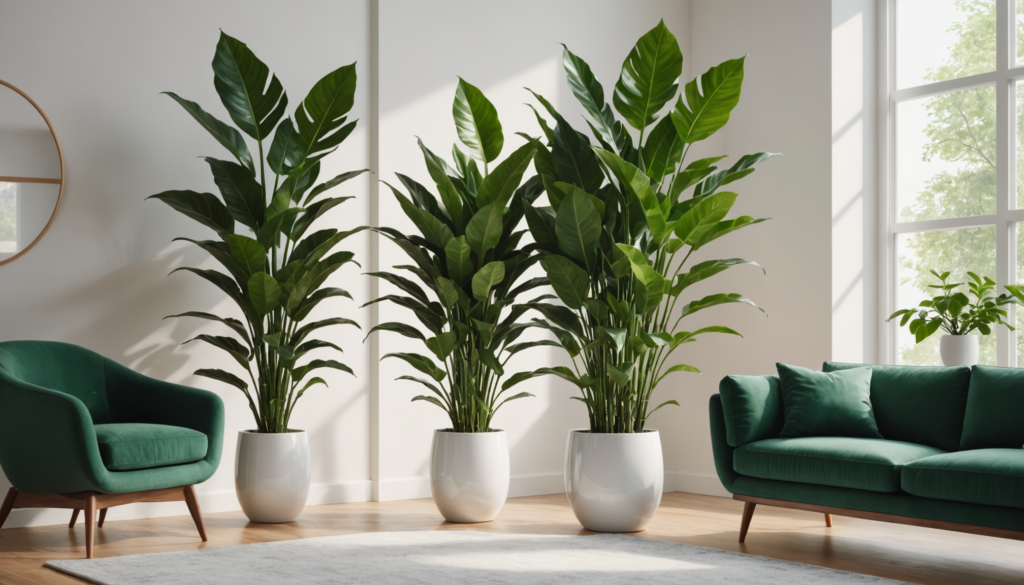
I consider the ZZ Plant (Zamioculcas zamiifolia) a low-maintenance indoor accent. Its thick rhizomes store water for weeks, which helps it endure long periods without frequent watering. This hardy member of the Araceae family also thrives in low-light conditions and tolerates a wide range of humidity levels.
Benefits of Incorporating ZZ Plants in Your Garden
I see several advantages when caring for a ZZ Plant. First, its foliage helps filter common indoor pollutants and adds lush greenery to any room (NASA Clean Air Study). It also adapts to indirect light or even deep shade, so it works well in offices or homes with minimal sunlight.
ZZ Plant Care for Unique Garden Settings
I place this easy-to-grow plant in corners with low-light or near north-facing windows to avoid direct sunlight. Its slow-growing stalk stands upright and rarely needs repotting. A well-draining soil mix prevents root rot, and fertilizer diluted to half strength once per growing season supports new growth.
Indoor Air Quality Benefits
I appreciate the ZZ Plant’s ability to help regulate humidity and reduce volatile organic compounds (VOCs). According to research, many aroid palm relatives offer modest air purification benefits, which benefits spaces with poor ventilation. Consistent watering—only when the top inch of soil feels dry—supports healthy foliage.
Safety Considerations for Pets and Children
I handle this tropical plant with care because it contains calcium oxalate crystals, which may irritate the skin or cause stomach upset if ingested (ASPCA). Keeping it out of reach of pets and children helps prevent accidental contact. Gloves or scissor tools protect skin while pruning.
| Setting Type | Light Level | Watering Frequency | Best Location |
|---|---|---|---|
| Home Office | Medium-Low | Every 2–3 weeks | Desktop or Corner |
| Living Room | Bright, Indirect | Every 2 weeks | Near Windows |
| Bathroom | Low–Medium | Every 3–4 weeks | Shelf |
| Bedroom | Low | Monthly | Nightstand |
Seasonal Care and Maintenance
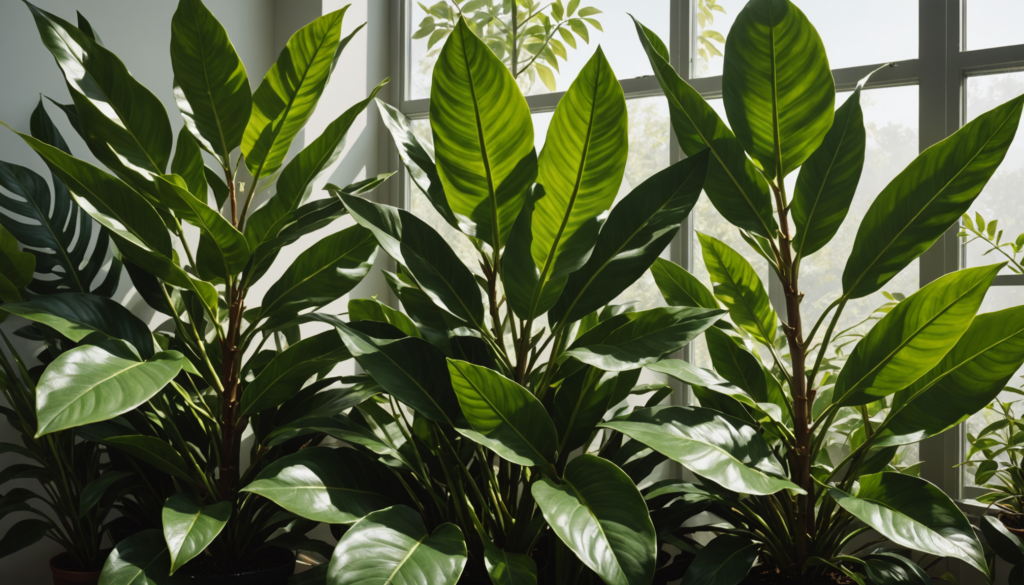
I care for my ZZ plant (Zamioculcas zamiifolia) by adjusting its routine throughout the year. It belongs to the Araceae family and remains easy to grow indoors due to its hardy, drought-tolerant nature (1). I watch its seasonal signals to guide watering and temperature tweaks.
Winter Care Requirements
In winter, I see my ZZ plant enter a dormant phase. I water only when the top two inches of soil feel dry, which happens about once every three to four weeks. I keep indoor temperatures between 65°F and 75°F (18-24°C) and move the pot away from windows to avoid chilly drafts. I also skip fertilizer during these months because the plant grows slowly in lower light.
Summer Growth Management
In summer, my Z. zamiifolia enters an active growth stage. I water every two to three weeks, letting the soil drain well between waterings. I keep the temperature around 70-80°F (21-27°C) and place the plant in bright, indirect light. I fertilize once a month with a balanced product since it produces new stems and foliage more rapidly.
Seasonal Adjustments to Care Routine
I adjust water, warmth, and light based on each season to keep my exotic ZZ plant thriving. It stores moisture in thick rhizomes, which helps it handle short dry spells. Here is my seasonal schedule:
| Season | Watering Frequency | Temperature Range | Light Needs | Fertilization |
|---|---|---|---|---|
| Winter | Every 3-4 weeks | 65-75°F | Low to medium | None |
| Spring | Every 2-3 weeks | 65-75°F | Medium | Monthly |
| Summer | Every 2-3 weeks | 70-80°F | Bright indirect | Monthly |
| Fall | Every 3 weeks | 65-75°F | Medium | None |
I watch for signs of overwatering, such as yellow leaves or mushy stems, and adjust my schedule as needed.
Troubleshooting Common ZZ Plant Problems
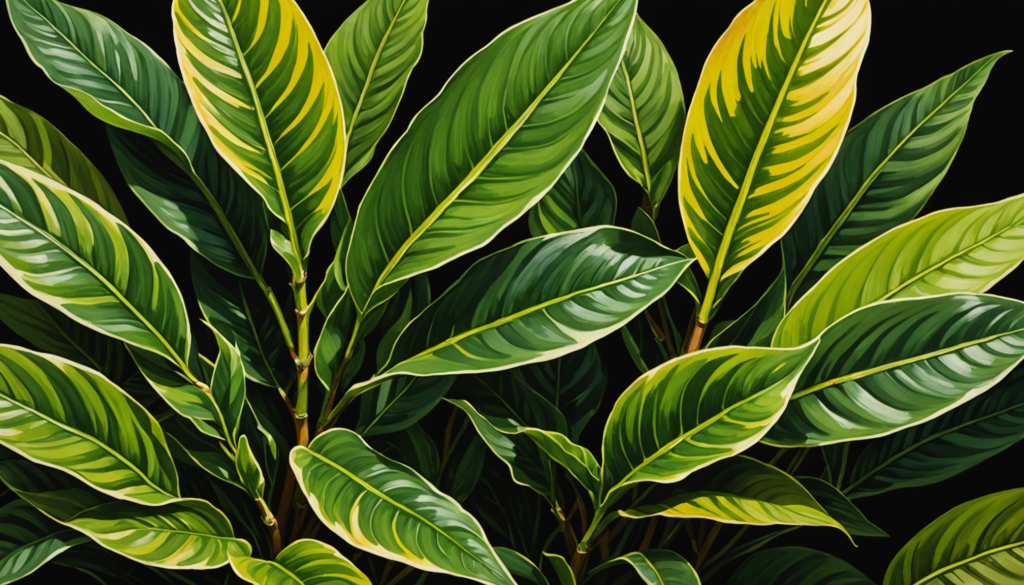
Zamioculcas zamiifolia often shows visible signs when something goes wrong. Its glossy leaves may change color or shape, and stems or rhizomes can weaken under poor conditions. Most issues relate to watering habits, pot size, or environmental stress.
Diagnosing Leaf Issues
Leaves act as early indicators of trouble. Overwatering usually leads to yellow leaves, while low humidity causes brown tips. Black spots often signal fungal infections from excess moisture. Curling leaves commonly stem from temperature stress or underwatering.
| Leaf Symptom | Likely Cause | Solution |
|---|---|---|
| Yellowing leaves | Overwatering or poor drainage | Reduce watering and check drainage holes |
| Brown leaf tips | Low humidity or mineral buildup | Increase humidity or use filtered water |
| Black spots | Fungal infection from excessive moisture | Remove affected leaves and lower watering |
| Curling leaves | Underwatering or temperature extremes | Adjust moisture and avoid direct sunlight |
Root and Stem Problems
Healthy rhizomes store water and keep the plant hardy. Root rot appears as black, mushy tissue from overwatering or waterlogged soil (Spruce). Removing damaged roots and repotting in well-draining mix is recommended. Stem collapse can also occur if the plant receives excessive moisture or cold drafts, and brown stems may show temperature stress.
Growth Rate Concerns
Zamioculcas zamiifolia usually grows slowly and may only produce two or three new leaves each season. Low light or restricted pot space are common reasons for stunted growth. Irregular growth patterns are linked to inadequate nutrition or fluctuating temperatures. Minor adjustments in fertilizer, pot size, or indirect light often help this easy to grow plant thrive again.
Conclusion
The ZZ plant truly lives up to its reputation as one of the most resilient and easy-to-grow houseplants you can find. With its glossy dark green leaves and ability to thrive in low-light conditions, this tough plant brings beauty to any indoor space while asking very little in return. From basic care requirements like indirect light and occasional watering to its remarkable drought tolerance, the ZZ plant is perfect for both beginners and experienced plant parents.
Whether you’re propagating new plants through leaf cuttings or managing seasonal care, your ZZ plant will reward your minimal efforts with lush, tropical foliage that stays green year-round. As you’ve learned, this forgiving plant can handle various indoor conditions while helping to purify your air and add a touch of exotic charm to your home. Start your ZZ plant journey today and discover why this extraordinary houseplant has become a favorite among indoor gardeners worldwide.
FAQs
1. What is the scientific name of the ZZ Plant?
This resilient houseplant by its full name, Zamioculcas zamiifolia (Lodd.) Engl. It sits in the Araceae family and stands as the only species in the Zamioculcas genus.
2. Why is it called Zamioculcas zamiifolia?
The term “Zamioculcas” describes its nod to the Zamia cycad genus. The word “zamiifolia” highlights how its foliage looks similar to those ancient plants. Together, these elements form the ZZ Plant scientific name.
3. Where does the ZZ Plant come from?
Zuzu Plant, also known as Z. zamiifolia, is native to eastern Africa. It grows in regions stretching from Kenya to northeastern South Africa and adapts to tropical, low-light habitats.
4. How tall does a ZZ Plant grow?
The glossy, dark-green stems reach 2–3 feet indoors. Each sturdy stem arches slightly as it matures, giving the plant a graceful look. It also grows slowly, which makes it easy to manage.
5. Is the ZZ Plant safe for pets?
Keep it away from cats and dogs because it contains calcium oxalate crystals that can irritate animals. A veterinarian visit is vital if a pet eats any part of the plant.





